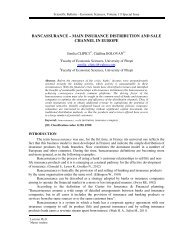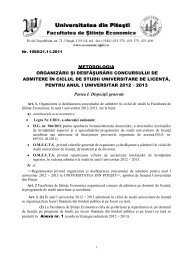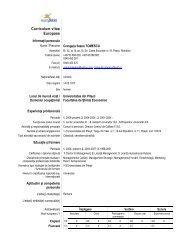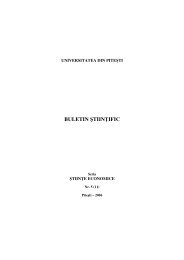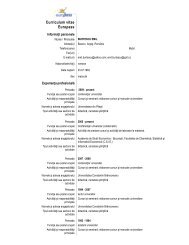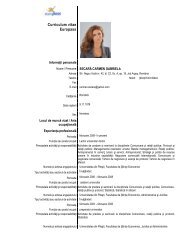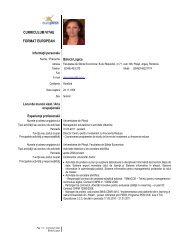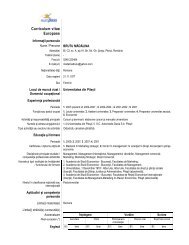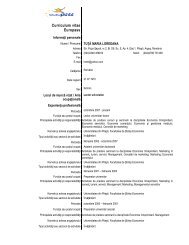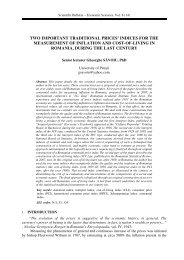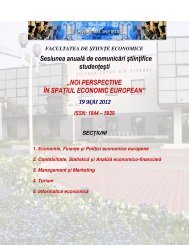buletin Åtiin ific - Facultatea de Stiinte Economice - Universitatea din ...
buletin Åtiin ific - Facultatea de Stiinte Economice - Universitatea din ...
buletin Åtiin ific - Facultatea de Stiinte Economice - Universitatea din ...
- No tags were found...
You also want an ePaper? Increase the reach of your titles
YUMPU automatically turns print PDFs into web optimized ePapers that Google loves.
Employment of labor in mo<strong>de</strong>ls of economic growthIn Harrod-Domar type monosectorial mo<strong>de</strong>ls, and others alike (Alezan<strong>de</strong>r, Smithies,Kaldor, Desenberry, Kohn, J. Robinson), employment is seen as a resource adapted toautomatically use the full requirements of such assets.Employment assumption is satisfied only in a particular case, respectively, when the<strong>de</strong>mographic rate of growth, which <strong>de</strong>termines the exogenous labour, is equal to the stock ofcapital rate of growth and the income increase.Solow-type mo<strong>de</strong>ls are based on the assumption that growth rates are proportionally tothe national income and total population. In this type of mo<strong>de</strong>ls, the influence of economicfactors, income, the <strong>de</strong>mographic growth and intermediate, over the employment, leads to thesolution that the population increase rate is adjusted automatically, <strong>de</strong>pen<strong>din</strong>g on the real salary.It is consi<strong>de</strong>red a function of aggregate production, with two factors of production(technical capital K, and labour L), which yields marginal <strong>de</strong>crease of the factors of production,efficiency of scale which comply the Inada four conditions:Y = F (K, L) - the productionInada conditions:∂F2 2> 0; ∂ F / ∂K< 0;∂L∂F2 2> 0; ∂ F / ∂L< 0;∂KF(λ K,λL)= λF(K,L),pentruλ> 0.lim( F ) = lim( F ) = ∞K →0L→0lim ( F ) = lim( F ) = 0K →∞kkL→∞LLThe condition which yields a consistent scale involves a function of production (income)as follows:Y / L = F (K / L, L / L) Y = LxF (K / L, 1) = Lxf (k)Where:k = K / L (capital stock per capita);y = Y / L (production, income per capita).The function of production will be: y = f (k)The mo<strong>de</strong>l takes into account a closed economy with a single sector, where output (Y) ishomogeneous, it is inten<strong>de</strong>d for consumption (C) or investment (I) to create new units oftechnical capital (k) savings is equal to investment ( I = S). If part of income comes from savings(s constant and positive), then 1 - s is the fraction that is consumed. The capital is subject to aconstant and positive <strong>de</strong>preciation rate.I=S= sxY = sxF (K, L);∆ K = investmens − <strong>de</strong>preciation = sxF(K,L)− δxK(K means his K <strong>de</strong>rived in relation to the time period t)2. Population growth and the economic growth processAssume that population and labour forces grow at the same rate constant n. To explainthe status of stationary Solow mo<strong>de</strong>l with population growth, we should analyze how thepopulation growth affects the accumulation of capital. Investments increase the stock of capitaland <strong>de</strong>preciation of investments falls. If the number of workers increases and K is constant, thanthe capital/ worker <strong>de</strong>creases.83




